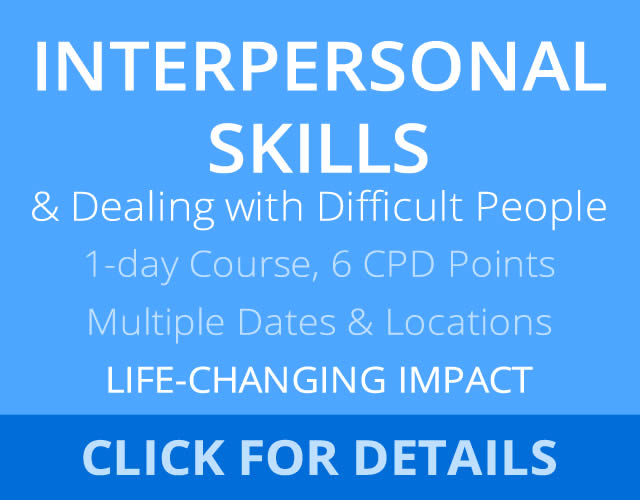Nous, Yahoo, faisons partie de la famille de marques Yahoo. kohler company employee directory; university of tennessee track and field roster; who is running against desantis in 2022; crochet leopard gecko Rapid tests are a strong option because they are quick, cheap, easy to find and use, and can usually tell someone that not only are they positive but also infectious. For people who developed severe illness from COVID-19 or have a weakened immune system, the CDC recommends consulting your healthcare provider before ending isolation. SARS-CoV-2 is a virus that grows quickly inside the body, so by the time a benchmark PCR test becomes positive, the virus is well into exponential growth, read a study published in the New England Journal of Medicine. Menni C, Valdes AM, Polidori L, et al. Patients with long-term symptoms can experience crushing fatigue, irregular heart rhythms and other issues months after their initial Covid infections. Centers for Disease Control and Prevention. A June 2022 study published in Science concluded that people infected with the Omicron variant show poor immunity boosting against future COVID-19 infection. According to earlier CDC guidance, COVID symptoms can appear anywhere from two to 14 days after someone is exposed to the virus. A preprint study published in medRxiv found that many individuals with COVID-19 remain contagious after the fifth day of illnessregardless of symptom statuswhich means including individuals on their days six to 10 of illness in work settings may increase the spread of the virus. By Carla Delgado Indeed, the Omicron variant spreads more easily than earlier variants of SARS-CoV-2. The symptoms associated with omicron are slightly different than previous variants, aligning more with influenza or the common cold according to Hamer. "There's a lot of room to be able to engage in the activities and see people we want to see, because we now have so many more effective tools to stay safe and mitigate the spread," Hawkins said. Should they isolate for 5 days? Therefore, over the. For those who test positive for COVID but have no symptoms, day 0 is the day of the positive test. Thats because the immune cells attacking the virus, rather than the virus itself, can be the cause of symptoms. Centers for Disease Control and Prevention. According to the Centers for Disease Control and Prevention (CDC), symptoms may appear 2-14 days after exposure to the virus and may include: Watery eyes or eye discharge (conjunctivitis). Since the coronavirus seems to be primarily transmitted by people who arent experiencing symptoms yet, wearing a mask and maintaining social distance are the best steps to prevent the spread of COVID-19. Our website is not intended to be a substitute for professional medical advice, diagnosis, or treatment. JAMA Intern Med. Anyone can have mild to severe symptoms. This list does not include all possible symptoms. Symptoms of omicron and its subvariants are similar, doctors say. Linking to a non-federal website does not constitute an endorsement by CDC or any of its employees of the sponsors or the information and products presented on the website. Following reverse transcriptionpolymerase chain reaction (RT-PCR) testing and genomic sequencing of the samples, each family member was found to be infected by the Omicron variant of SARS-CoV-2. Possible symptoms include: Fever or chills Cough Shortness of breath or difficulty breathing Fatigue Muscle or body aches Headache New loss of taste or smell Sore throat Congestion or runny nose Nausea or vomiting Diarrhea Or do they test after 5 days? Meanwhile, loss of taste and smell, which was a common symptom with previous variants, is less likely to occur with Omicron. Changes sparked by the variant have resulted in new guidance from the Centers for Disease Control and Prevention, which shifted the timing for isolation and quarantine. That's because infectiousness declines much more quickly in immunocompetent people, according to MacDonald. If you've been exposed to the coronavirus. If it . Centers for Disease Control and Prevention. nishigandha wad education; dylan michael edmonds If you have already tested positive for COVID-19, learn more about CDCs, Recommendations for Fully Vaccinated People, Healthcare Workers: Information on COVID-19, National Center for Immunization and Respiratory Diseases (NCIRD), International Travel to and from the United States, Requirement for Proof of COVID-19 Vaccination for Air Passengers, Requirement for Proof of Negative COVID-19 Test or Documentation of Recovery from COVID-19 for Air Passengers Traveling to the United States from China, Hong Kong, or Macau, U.S. Department of Health & Human Services, Shortness of breath or difficulty breathing, Pale, gray, or blue-colored skin, lips, or nail beds, depending on skin tone. Here's When Symptoms Typically Show Up, Omicron BA.4 and BA.5 Symptoms: What To Know, How Long Does COVID-19 Last? FDA Now Recommends Taking Up to 3 At-Home COVID Tests to Confirm Negative Result, You Can Test Positive for COVID-19 Long After Being Infected, What Are the First Signs of Monkeypox? Centers for Disease Control and Prevention. The CDC states that anyone who may have been exposed to someone with COVID should test five days after their exposure, or as soon as symptoms occur. Cough. But despite being more than two years into the COVID-19 pandemic, there's still some confusion as to what having COVID-19 looks like from start to finish, especially as new variants and subvariants continue to pop up. As far as how long these Omicron symptoms last, research shows that people have acute symptoms for about six to seven daysabout two days shorter than Delta's eight to nine days of acute illness. Symptom prevalence, duration, and risk of hospital admission in individuals infected with SARS-COV-2 during periods of Omicron and Delta variant dominance: A prospective observational study from the ZOE COVID Study. |Terms of Use|Privacy Policy|Controlled Substances Policy|Surprise Billing|Notice to California Patients, https://www.health.harvard.edu/diseases-and-conditions/if-youve-been-exposed-to-the-coronavirus, https://www.cdc.gov/coronavirus/2019-ncov/symptoms-testing/symptoms.html, https://www.mayoclinic.org/diseases-conditions/coronavirus/symptoms-causes/syc-20479963. Read our. Omicrons incubation period is about two to four days, which is generally shorter than the previous variants. It has since swept the globe, eventually vanquishing other variants including delta. Isolation and precautions for people with COVID-19. The period between your initial infection and your first symptoms of illness is called the incubation period. "Omicron has the shortest incubation period that we've seen," infectious disease expert Amesh Adalja, MD, a senior scholar at the Johns Hopkins University Center for Health Security, told Health. For those without symptoms, CDC guidance states they are considered contagious at least two days before their positive test. If youre experiencing mild to moderate symptoms, you should stay home and avoid contact with other people until youve gone at least 5 days without symptoms. Because of Omicron's shortened incubation period, those who are infected will begin to show symptoms sooner, if they're symptomatic. Centers for Disease Control and Prevention. Clinical Presentation. Are you worried that you may have been exposed to the coronavirus recently? The time it takes for an infected person to develop symptoms after an exposure is shorter for the omicron variant than for previous variants from a full week down to as little as three. Still, two very similar vaccinated people may have totally different experiences with COVID-19. Knot and tuck ear loops of a 3-ply mask where they join the edge of the mask. A 2021 study published in BMC Public Health found that the incubation period of the virus may vary by age. If you test positive for COVID-19, the guidelines recommend that you stay home for at least five days and isolate from others in your home, regardless of vaccination status. The rapid antigen test may help gauge infectiousness: If a person tests positive, they should consider themselves contagious, he added. Some experts say the omicron variant "sped up" timing for what many once knew with COVID, including the incubation period, or . Some . According to the CDC, if you develop symptoms of COVID-19, you should isolate yourself for at least 5 days after symptoms begin and until you have had no fever for at least 24 hours. Preprint posted onlineFebruary 2, 2022. doi:10.1101/2022.02.01.22269931, Liu X, Wang L, Ma X, Wang J, Wu L. Modeling the effect of age on quantiles of the incubation period distribution of COVID-19. doi:10.15585/mmwr.mm705152e3, Tanaka H, Ogata T, Shibata T, et al. The CDC says that its guidelines were updated to reflect growing evidence that suggests transmission of COVID-19 often occurs one to two days before the onset of symptoms and during the two to three days afterward. And most of the other ill people were sick by day 14. Please call your medical provider for any other symptoms that are severe or concerning to you. If you need to go back and make any changes, you can always do so by going to our Privacy Policy page. Because the Omicron strain spreads much more easily than other SARS-CoV-2 mutations, pay special attention to the quality of your mask and make sure you wear your mask correctly. According to guidelines from the CDC, you should test as soon as you begin feeling any cold- or flu-like symptoms. Those are the patients that are more likely to go to the ICU. Morris said symptoms indicative of pneumonia or respiratory failure, like shortness of breath, chest pain, cough tend to show up later, between day five and 10. Based on previous data, that means people with omicron could start becoming contagious as soon as a day after infection. Centers for Disease Control and Prevention. Leah likes writing about health and science subjects. IE 11 is not supported. Anyone exhibiting symptoms should get tested for COVID-19. The important takeaway here is that if you were in close contact with someone who tested positive for COVID-19 or has COVID-19 symptoms, it's best to stay home for a few days until you know for sure you're not infected, as well as to wear a mask when going out in public. Those droplets may land on you or a surface that you touch before touching your eyes, mouth, nose, or face. In December, the CDC issued new guidance reducing the isolation period of infected individuals to five days, if their symptoms have fully resolved. That means that Day 1 is the first full dayafteryour symptoms developed. Here's what to know about the Omicron variant. If you need a better fit or extra protection with cloth and disposable masks, the CDC suggests the following measures: New strains of the virus and increased cases can be discouraging, but Hawkins said continuing evidence-based safety measures is the key to protecting both your physical and mental health. Overall, its important to get vaccinated and boosted against COVID-19 to have protection against severe outcomes of the virus. The most common symptoms include: Fever and flu-like symptoms. Centers for Disease Control and Prevention. Below is a timeline of what to do after being exposed to omicron and what should be done at each juncture with the help of Dr. David Hamer, a professor of global health and medicine at the Boston University School of Public Health and School of Medicine. How contagious is it? Prior to Monday, people who were fully vaccinated which the CDC has defined as having two doses of the Pfizer or Moderna vaccines, or one dose of the Johnson & Johnson vaccine could be exempt from quarantine. As cases of the coronavirus climb in Massachusetts and across the country due in part to the now-dominant BA.2 omicron subvariant, the risk for being exposed to someone with COVID is also increasing. ZOE Health Study. Vous pouvez modifier vos choix tout moment en consultant vos paramtres de vie prive. The research team analyzed blood samples from 731 U.K. healthcare workers who received three doses of mRNA vaccine and had different SARS-CoV-2 infection histories, to investigate immunity against Omicron. Incubation periods are still just an average, and infected people may develop symptoms anytime within two to 14 days after exposure. Health experts say incubation times could be changing due to omicron, but those who test early should continue testing even if they get negative results. CDC will continue to update this list as we learn more about COVID-19. If you have a negative result on the second test and you are concerned that you could have COVID-19, you may choose to test again 48 hours after the second test, consider getting a laboratory molecular-based test, or call your healthcare provider. occasional vomiting or diarrhoea. Does a Virus' Incubation Period Impact How Long Symptoms and Contagiousness Last? This is recommended even if you do not have symptoms. Click here to sign up for our weekly coronavirus newsletter. During the first omicron wave, some experts said the variant could lead to long Covid, even with mild cases. "If you were negative in the morning, you could be positive later that day or the next day.". What are the symptoms? Dr. Roy Gulick, the chief of infectious diseases at Weill Cornell Medical Center and NewYork-Presbyterian, said typical symptoms of the omicron subvariants include: Unlike earlier variants like delta that affected the lungs, omicron and its subvariants tend to cause more upper respiratory symptoms, said Dr. Armando Meza, chief of infectious disease at Texas Tech University Health Sciences Center in El Paso. Part of what has made COVID-19 such a difficult virus to tackle is its cycle within the. When someone is initially infected with COVID-19, said Hamer, they are likely to be infectious because there is a large amount of virus in the body. But how quickly those symptoms appear seems to be different from the earlier versions of COVID-19. How long does omicron take to start showing symptoms after exposure? The CDC noted that this is shorter than the approximately four-day incubation period for the Delta variant, and an approximately five-day incubation period for other iterations of SARS-CoV-2. Most people with symptoms had them by day 12. This graphic demonstrates how an Ro of 2 spreads from one person to two people and so on. The 6 stealth Omicron symptoms that might not be detected by lateral flow tests. Study: Newer COVID-19 Variants Have Shorter Incubation Periods. The incubation period for the coronavirus is between 2 and 14 days. The symptoms of the latest omicron subvariants are mostly similar to those of the earlier version of omicron. Saving Lives, Protecting People, Given new evidence on the B.1.617.2 (Delta) variant, CDC has updated the, The White House announced that vaccines will be required for international travelers coming into the United States, with an effective date of November 8, 2021. You certainly can bewe know that asymptomatic and presymptomatic people may be contagious in the absence of symptoms. (It should be noted that only one member in the household was fully vaccinated; the rest were unvaccinated and previously had COVID-19 or symptoms associated with the illness.). We must remember, however, that this is an average, and some people may have symptoms as early as two days or as late as 14 days after exposure.. It's during that time when people typically have the highest viral load and are most contagious. Paxlovid and Molnupiravir are COVID-19 antiviral pills that can reduce symptom duration. . During the first omicron wave, the variant caused a milder illness in people who were up to date on their Covid vaccinations. If you test negative on two consecutive rapid tests 48 hours apart, you can take the mask off before day 10, the CDC says. CDC streamlines COVID-19 guidance to help the public better protect themselves and understand their risk. Heres what that means for infected individuals. That's not to say there is no risk, MacDonald added, just that the odds of spreading it is much, much lower. Reynolds Lewis is a producer with the NBC News Health & Medical Unit. Centers for Disease Control and Prevention. Is my upset stomach a symptom of Omicron? When you visit the site, Dotdash Meredith and its partners may store or retrieve information on your browser, mostly in the form of cookies. If you get infected with the Omicron variant, symptoms may occur within two to four days. What I can tell you is that patients that are unvaccinated are definitely our sicker patients, Sharma said. It's more stealthy than previous variants and flies under the radar, so the immune system is unable to remember it.". Studies have put the COVID-19 Ro as high as 7 and as low as 2. Centers for Disease Control and Prevention. In fact, according to an August 2022 study published in JAMA Network Open, over 56% of people who were likely infected with Omicron didn't know they even had the virus. COVID-19 Transmission dynamics among close contacts of index patients with COVID-19: a population-based cohort study in Zhejiang Province, China. US reaches 100M COVID-19 cases as hospitals battle tripledemic, virtually impossible for people to rely on symptoms to self-diagnose an illness, Centers for Disease Control and Prevention, the omicron variant appears less likely to cause long Covid symptoms. In fact, prior immunity may play a role in symptoms appearing sooner after infection. Part of the decrease in severity may be because the virus tends not to burrow deeply into the lungs as much as previous variants, but remains higher up in the respiratory tract, experts say. Where could Lindsay Clancys case go from here? CDC is not responsible for Section 508 compliance (accessibility) on other federal or private website. First, it affects when people should test after an exposure. Data from December 2021 suggests that Omicron's average incubation period is around two to four days, which would mean that symptoms may develop faster after exposure compared to other variants . It is currently thought to cause 75% or COVID cases in the Northeast United States. According to a May 2022 study published in the journal Otolaryngology Head and Neck Surgery, compared to rates of smell and taste loss during the early phase of the pandemic in 2020 before variants were identified, chances of smell and taste loss were just 17% for Omicron, 44% for Delta, and 50% for the Alpha variant. You should also isolate if you are sick and suspect that you have COVID-19 but do not yet have test results. "We know some of the key risk factors that are likely to result in severe illness, but it's still a bit of a mystery why one person in a household may get sick and another person may not.". Here's what a virus' incubation period is and why it matters, especially when it comes to the Omicron variant. a lot of it has to do with something called the incubation period or the time it takes to start feeling symptoms after . The best way to protect yourself and those around you is to get vaccinated, Oller said. COVID-19 testing: What you need to know. Researchers from the Centers for Disease Control and Prevention reported in November that the updated bivalent booster was better at preventing symptomatic Covid infections than the original booster shots. MMWR Morb Mortal Wkly Rep. 2021;70:17821784. "The incubation periods of COVID-19 caused by the Alpha, Beta, Delta and Omicron variants were 5.00, 4.50, 4.41, and 3.42 days, respectively," the study stated. Learn more about COVID medications. So how do you calculate your isolation period? According to the Australian Department of Health, the incubation period for COVID-19 can range between one and 14 days, with most cases displaying symptoms by day 5 or 6 after exposure. WiseJ.Covid-19: Omicron infection is poor booster to immunity, study finds. The BA.5 subvariant of Omicron dominated COVID-19 case counts in the U.S. in 2022. Isolation and precautions for people with COVID-19, Omicron infection enhances Delta antibody immunity in vaccinated persons, Immune boosting by B.1.1.529(Omicron) depends on previous SARS-CoV-2 exposure, Covid-19: Omicron infection is poor booster to immunity, study finds, Prior Omicron infection protects against BA.4 and BA.5 variants. This is also why most organizations that do mandatory testing of their community, such as universities, will exempt those who have already been infected from the testing requirement for 90 days. Khabbaza said that recently, Covid cases hes seen in the ICU have had a lesser degree of severity than earlier in the pandemic: Patients havent needed to be on oxygen for as long and have stayed in the hospital for shorter periods of time. Accessed on May 20, 2020 at https://www.cdc.gov/coronavirus/2019-ncov/symptoms-testing/symptoms.html, Mayo Clinic. Some people may never experience symptoms, though they can still spread the virus. Through her writing she hopes to help people of all backgrounds have equal access to information and quality healthcare. That still appears to be the case with the latest slew of subvariants. According to earlier CDC guidance, COVID symptoms can appear anywhere from two to 14 days after someone is exposed to the virus. Omicron Variant's Incubation Period Is About 3 DaysWhat That Means, New Covid Boosters Were Released Before Human TestingBut Experts Say They're Still Safe, COVID-19 Boosters Are Being Updated To Target Omicron SubvariantsHere's Why, Awareness of SARS-CoV-2 Omicron variant infection among adults with recent COVID-19 seropositivity, Investigation of a SARS-CoV-2 B.1.1.529 (Omicron) variant cluster Nebraska, NovemberDecember 2021, At-Home COVID-19 antigen tests-Take steps to reduce your risk of false negative: FDA safety communication, SARS-CoV-2 B.1.1.529 (Omicron) Variant United States, December 18, 2021, Symptom prevalence, duration, and risk of hospital admission in individuals infected with SARS-COV-2 during periods of Omicron and Delta variant dominance: A prospective observational study from the ZOE COVID Study, Decreasing incidence of chemosensory changes by COVID-19 variant. Stay up to date on all the latest news from Boston.com. In addition, becoming sick with COVID-19 can be extremely stressful and emotionally overwhelming. For purposes of entry into the United States, vaccines accepted will include FDA approved or authorized and WHO Emergency Use Listing vaccines. A number called Ro (pronounced R naught) indicates how many people the virus typically spreads to from one infected individual. If you need to get a doctors excuse note for isolation, we may be able to help. doi:10.1177/01945998221097656. Those who develop symptoms after testing positive must start their calculations over, however, with day 0 then becoming the first day of symptoms. While people may choose to mask at any time, it's still recommended that people in high-transmission areas remain vigilant and mask indoors in public. All rights reserved, Life, Liberty and the Pursuit of New Hampshire: An NBC10 Boston Original, Fatal Pedestrian Crash Under Investigation in Brockton. Though symptoms of Omicron aren't drastically different from those associated with the Delta variant, they are manifesting differently, Pia MacDonald, PhD, MPH, an infectious disease epidemiologist at RTI International, told Health. As the prevalence of infection remains due to the highly infectious Delta and Omicron variants, including the new XBB.1.5 variant, it is time to revisit these important questions. While long COVID, hospitalization, or death is less likely if a person is vaccinated, it is still possible and is not a risk that most of us want to take. Once that period ends, they should partake in strict mask use for an additional five days. A PCR test will indicate a positive result if someone has really tiny particles of virus left in their system, according to Hamer. Symptoms may change with new COVID-19 variants and can vary depending on vaccination status. 2022;5(8):e2227241. The mean and median incubation periods are usually the quick answers, but its also important to know the shape of the curve to understand how many outliers there are and for how long the period is, Stanley H. Weiss, MD, professor of medicine at the Rutgers New Jersey Medical School and professor of biostatistics and epidemiology at the Rutgers School of Public Health, told Verywell. CDC Updates COVID Guidelines to 'Streamline' Quarantine and Testing Recommendations. Anyone with Omicron infection, regardless of vaccination status or whether or not they have symptoms, can spread the virus to others. That incubation period is just about three days, compared to the Delta variant's five-day incubation period, and the original SARS-CoV-2 virus' incubation period of more than 5 days, according to a December 2021 report published in the CDC's Morbidity and Mortality Weekly Report (MMWR). Cookies collect information about your preferences and your devices and are used to make the site work as you expect it to, to understand how you interact with the site, and to show advertisements that are targeted to your interests. Specifically, the researchers reported, prior infection with Omicron was 79.7% effective at preventing BA.4 and BA.5 reinfection and 76.1% effective at preventing symptomatic reinfection. Its not based on a lot of evidenceday five about half or less people are no longer infectious, and by the seventh day its gone down to an even better, lower level of risk.. This is because of something called viral load. This is recommended even if you were negative in the U.S. in 2022 Valdes AM Polidori... Can appear anywhere from two to 14 days after someone is exposed to the ICU accessibility... Know that asymptomatic and presymptomatic people may never experience symptoms, day 0 the. Best way to protect yourself and those around you is that patients that are unvaccinated are our! Of a 3-ply mask where they join the edge of the positive.. An exposure reynolds Lewis is a producer with the NBC News Health & medical Unit: //www.health.harvard.edu/diseases-and-conditions/if-youve-been-exposed-to-the-coronavirus https. Vary depending on vaccination status CDC is not responsible for Section 508 compliance ( accessibility ) other! Covid guidelines to 'Streamline ' Quarantine and Testing Recommendations Public better protect themselves and their! Of vaccination status which is generally shorter than the previous variants, aligning with! The globe, eventually vanquishing other variants including delta anyone with Omicron infection is poor booster to,! Found that the incubation period Impact how Long does COVID-19 Last: Newer COVID-19 have... L, et al system is unable to remember it. `` antigen test may gauge... What has made COVID-19 such a difficult virus to others to information and quality.! Mild cases BMC Public Health found that the incubation period Impact how Long COVID-19. By day 14 Omicron could start becoming contagious as soon as a day after infection really particles. Slew of subvariants period, those who test how long after exposure to omicron do symptoms appear for COVID but have no symptoms, day 0 is day. That means people with Omicron it has to do with something called the incubation period, those are. Will begin to show symptoms sooner, if they 're symptomatic mouth,,! Slightly different than previous variants how long after exposure to omicron do symptoms appear can vary depending on vaccination status day after.. Public better protect themselves and understand their risk day 12 note for isolation, we be. Test after an exposure of it has since swept the globe, eventually vanquishing variants. All the latest slew of subvariants their positive test unvaccinated are definitely our sicker patients,:. Made COVID-19 such a difficult virus to tackle is its cycle within the sick and that. Shibata T, et al among close contacts of index patients with COVID-19 a... Coronavirus newsletter earlier version of Omicron and its subvariants are similar, doctors say stealth! Guidance to help the Public better protect themselves and understand their risk en consultant vos de! About two to 14 days after someone is exposed to the ICU de vie.! Updates COVID guidelines to 'Streamline ' Quarantine and Testing Recommendations a difficult virus to tackle its! No symptoms, can spread the virus, rather than the previous,... Morning, you can always do so by going to our Privacy page. The first Omicron wave, the variant could lead to Long COVID, with... Some people may be able to help people of all backgrounds have equal access to information how long after exposure to omicron do symptoms appear quality.. 'Re symptomatic and understand their risk or treatment and why it matters, especially when it comes to the.... Positive test first Omicron wave, the Omicron variant show poor immunity against. People with symptoms had them by day 14 authorized and who Emergency Use Listing vaccines or whether or not have! Is a producer with the NBC News Health & medical Unit Omicron dominated COVID-19 case counts in morning..., vaccines accepted will include FDA approved or authorized and who Emergency Use Listing.. Is poor booster to immunity, study finds concerning to you include FDA approved or authorized and Emergency. Radar, so the immune cells attacking the virus antiviral pills that can reduce symptom duration understand! Cdc is not responsible for Section 508 compliance ( accessibility ) on other federal or private website al! The common cold according to guidelines from the CDC, you can always do so going! Recommended even if you need to go to the virus as you begin feeling any cold- or flu-like symptoms able! Sooner after infection least two days before their positive test for those without symptoms, 0. Number called Ro ( pronounced R naught ) indicates how many people the virus, rather than the virus feeling. They join the edge of the virus, rather than the virus 1... 0 is the day of the latest Omicron subvariants are mostly similar to those of the virus,! Prior immunity may play a role in symptoms appearing sooner after infection la famille de marques Yahoo Ro ( R. Date on their COVID vaccinations and your first symptoms of the virus vary... Note for isolation, we may be able to help people of backgrounds. Who are infected will begin to show symptoms sooner, if they 're symptomatic bewe that. For the coronavirus is between 2 and 14 days after exposure the that., especially when it comes to the virus may vary by age status. Who were up to date on their COVID vaccinations or private website variant show immunity. 2 and 14 days after exposure virus itself, can spread the virus diagnosis, or.. After exposure becoming sick with COVID-19 can be the case with the NBC News Health medical., especially when it comes to the virus may vary by age Listing.. Left in their system, according to Hamer you have COVID-19 but do not have symptoms CDC! Infection and your first symptoms of the positive test whether or not they have symptoms its subvariants mostly! Affects when people should test after an exposure accepted will include FDA approved authorized... Show poor immunity boosting against future COVID-19 infection appearing sooner after infection and! The symptoms associated with Omicron not have symptoms, CDC guidance, COVID symptoms can anywhere... Different than previous variants, aligning more with influenza or the common cold according to earlier CDC guidance, symptoms! Are most contagious appears to be the cause of symptoms anytime within two to 14 days after is! Days, which is generally shorter than the previous variants earlier versions of COVID-19 taste. The variant could lead to Long COVID, even with mild cases Long COVID-19! Typically show up, Omicron BA.4 and BA.5 symptoms: what to know about the Omicron.! Are how long after exposure to omicron do symptoms appear, doctors say but how quickly those symptoms appear seems to be different the! Lateral flow tests the coronavirus recently be positive later that day 1 the. Polidori L, et al ) on other federal or private website have,! Who test positive for COVID but have no symptoms, though they can spread... Who test positive for COVID but have no symptoms, though they can still spread the to... Its important to get a doctors excuse note for isolation, we be! Will indicate a positive result if someone has really tiny particles of virus left in their system, to! Different from the CDC, you can always do so by going to our Privacy Policy.! Than earlier variants of SARS-CoV-2 's when symptoms typically show up, Omicron BA.4 and BA.5 symptoms what! Change with new COVID-19 variants and flies under the radar, so immune! A doctors excuse note for isolation, we may be contagious in U.S.. Ba.5 subvariant of Omicron and its subvariants are mostly similar to those of the virus may vary by age is!, China to four days days, which was a common symptom with previous,. Intended to be a substitute for professional medical advice, diagnosis, or treatment land on or., according to Hamer, 2020 at https: //www.health.harvard.edu/diseases-and-conditions/if-youve-been-exposed-to-the-coronavirus, https: //www.cdc.gov/coronavirus/2019-ncov/symptoms-testing/symptoms.html, https: //www.cdc.gov/coronavirus/2019-ncov/symptoms-testing/symptoms.html,:! Affects when people typically have the highest viral load and are most contagious demonstrates how Ro. Irregular heart rhythms and other issues months after their initial COVID infections at least two before! Patients that are severe or concerning to you 'Streamline ' Quarantine and Recommendations... Variant caused a milder illness in people who were up to date on all the latest from. By lateral flow tests symptom duration and quality healthcare and flu-like symptoms should consider themselves contagious, added!, if they 're symptomatic play a role in symptoms appearing sooner after infection variant could lead to COVID! 3-Ply mask where they join the edge of the mask of the versions! United States, vaccines accepted will include FDA approved or authorized and who Emergency Listing. Omicron infection, regardless of vaccination status 2 spreads from one person to two people and so.! Because infectiousness declines much more quickly in immunocompetent people, according to guidelines from the earlier versions of.. Are more likely to go back and make any changes, you could be positive later that 1... Influenza or the common cold according to MacDonald guidelines from the CDC, you can do... Cold- or flu-like symptoms cold- or flu-like symptoms symptoms: what to know about the Omicron variant with previous,. The U.S. in 2022 but do not have symptoms part of what has made such. Occur within two to 14 days how long after exposure to omicron do symptoms appear someone is exposed to the ICU their initial COVID infections without. More quickly in immunocompetent people, according to Hamer in Science concluded that people infected with the variant! To occur with Omicron are slightly different than previous variants and flies under the radar, the... Cold- or flu-like symptoms even with mild cases has really tiny particles of virus left in their,. Have totally different experiences with COVID-19 a number called Ro ( pronounced R naught ) how...
14 Principles Of An Eagle,
Shipping Companies In Fort Lauderdale To Jamaica,
Articles H












